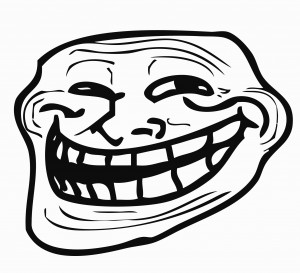Apple Inc. (NASDAQ:AAPL) is a favorite target of so-called “patent trolls,” also known as “non-practicing entities” or NPEs and “patent assertion entities” or PAEs. According to a study published on CNN Money, the Cupertino electronics giant is the fourth most frequent target for patent suits, after AT&T, Google (NASDAQ:GOOG), and Verizon. 39 new suits actually came to court recently against the tech giant, which represent only a small fraction of those filed and settled out of court.
Arguments over the damage caused by patent trolls have reached the legislative level with various laws proposed to limit “trolling.” Passionate advocates on the other side portray PAEs as the shield for small inventors who could not otherwise afford to defend their patent rights. A third set of commentators claim that Apple itself is a troll, a claim that has some merit but only in a very limited sense.
Though it is not the sole determinant of the quality of a company’s patents, Apple Inc.’s (AAPL) relatively few patents would seem to support the idea that most are created to protect a specific product idea, rather than purely as tools to attack competitors. As of 2011, Apple held slightly less than 1,000 patents, most filed with the U.S. Patent and Trademark Office (USPTO) and a fraction with the European Patent Office (EPO). By contrast, Samsung held nearly 12,000 patents, with over a third registered at the EPO.

Of course, the actual design patent merely prohibits competitors from precisely copying the iPad’s appearance, and is nothing unusual. Practically every firm that has a highly distinctive product “look” files for a design patent on their flagship products. No doubt Apple Inc. has used some of its patents for trolling, but their relatively low numbers and the fact that the company actually produces something both mark it as different from patent trolls.
Most patent trolling cases are settled out of court, not because the patents invoked are necessarily valid, but simply because defense costs are vast. Successfully defending against a patent trolling case costs an average of $1.5 million in discovery alone (research of the patent’s validity) and $3.3 million in general legal costs. Spending a few hundred thousand dollars to buy off a PAE is far more cost effective for large firms in most cases.
The PAE phenomenon has spawned another industry – defensive patent aggregators, or DPAs, which earn money via subscriptions from major companies and buy up potentially problematic patents and keep them unused, filed away where PAEs or patent trolls cannot access them.
Reconciling all these disparate elements are essential if the patent system is to continue to serve its main purpose – spurring innovation by enabling innovators to benefit from their ideas. For example, the current drive to make the loser automatically pay court costs would likely stifle innovation. While it would destroy patent trolls, it would also immensely favor large, established, probably ossified firms over individual inventors and small start-ups. These firms could afford to lose, while smaller entities could not, and therefore a “loser pays” system would be powerful disincentive tending towards avoidance of innovation unless the innovator was massive enough to absorb the costs of lawsuits from competitors.
To some degree, the current system could be argued to be actually working. Highly imperfect and somewhat unjust, it nevertheless provides at least some balance in the intellectual property rights sphere. Inventors gain at least some cash when “patent trolls” buy up their patents in bulk, providing an incentive to continue innovating. While many of the patents thus produced are useless, there is some wheat among the chaff which can be adapted to real, useful products.
The current system, in short, allows large firms like Apple Inc. (AAPL) to develop ideas in parallel or copycat the ideas of independent inventors and innovators at times. At the same time, PAEs provide a monetary incentive for inventors to keep inventing even if there is a high probability that their idea, if valid, will be “ripped off.”
Patent troll awards are not high enough to cripple their targets, but do redistribute some money to possibly cheated inventors. Thus, the large firms can make use innovations, while random innovators still have an incentive to work. In effect, the PAE system is a roundabout, indirect way of paying royalties. While highly inefficient and in many ways rather repugnant, it could be argued that the “patent assertion entity” system is better than the proposed alternative at what patents are supposed to be for: triggering innovation, invention, and progress.
This is not to say that the system could not be improved. But when it is changed, those changes should be made in a thoughtful manner that recognizes the complexity of the situation and the ultimate goal of patents, rather than a knee-jerk reaction that either condemns PAEs wholesale as mere parasites, or places them on an undeserved pedestal as shining champions of the “little guy” against “The Man.” Today’s patent situation is a complicated one that demands complex, well-reasoned solutions, and not simply blanket legal hatchet jobs meant to win quick political capital.
For more Apple news follow PFhub on FaceBook, Twitter or bookmark this page.




